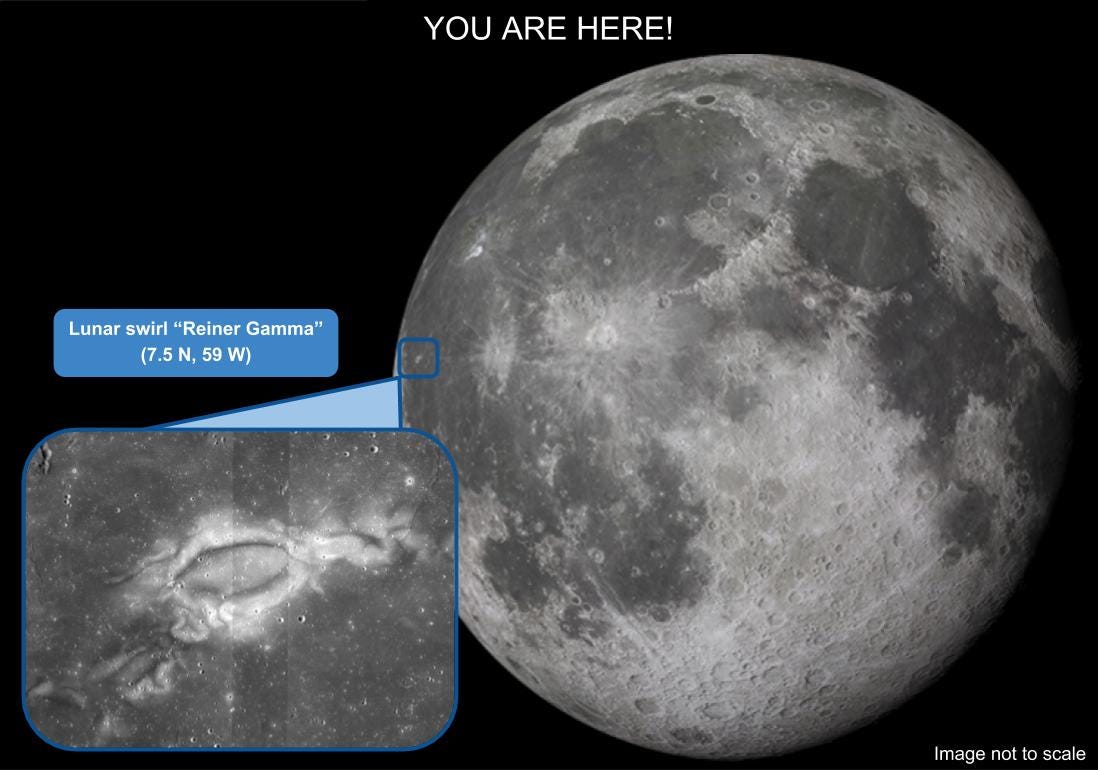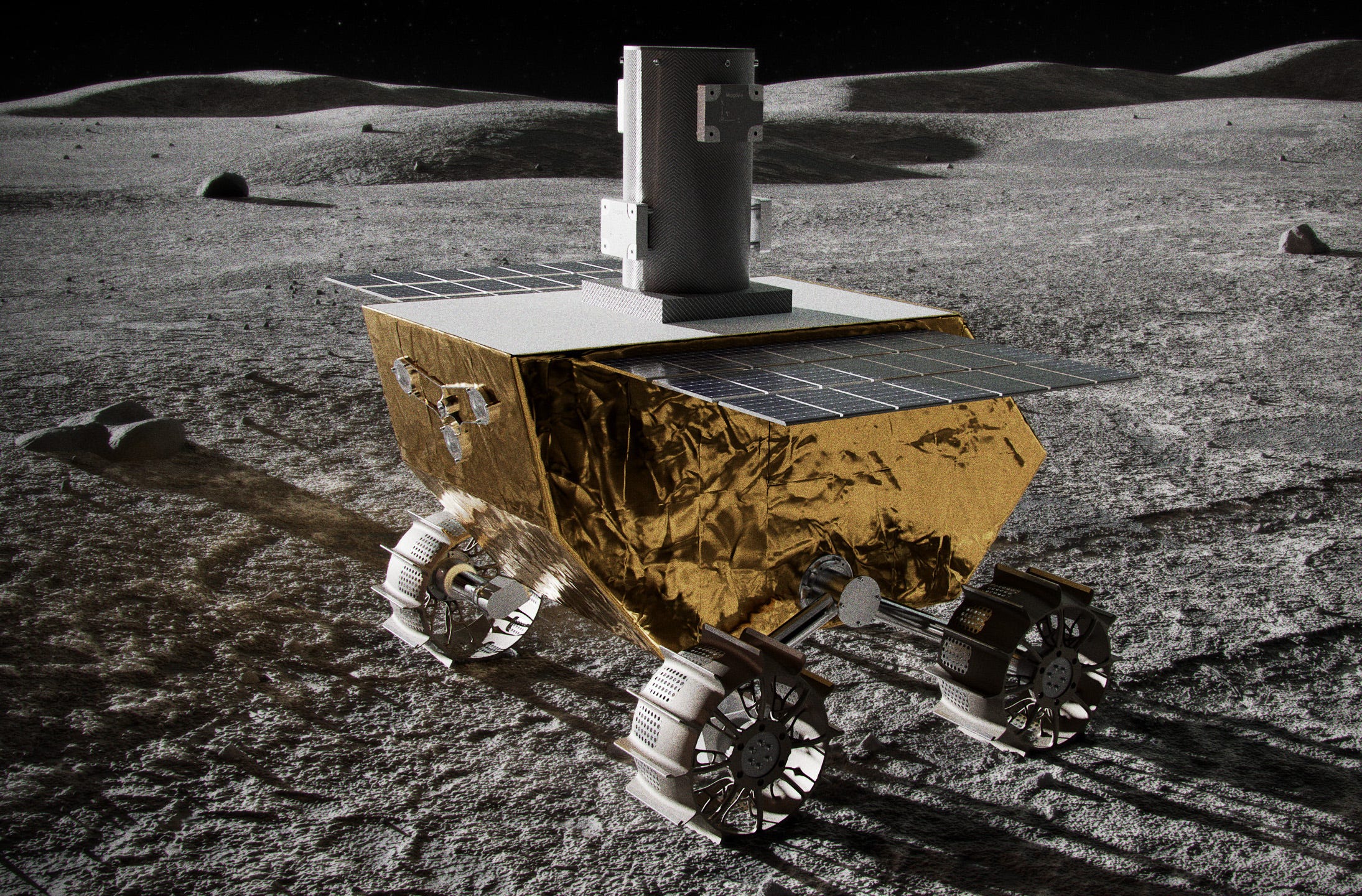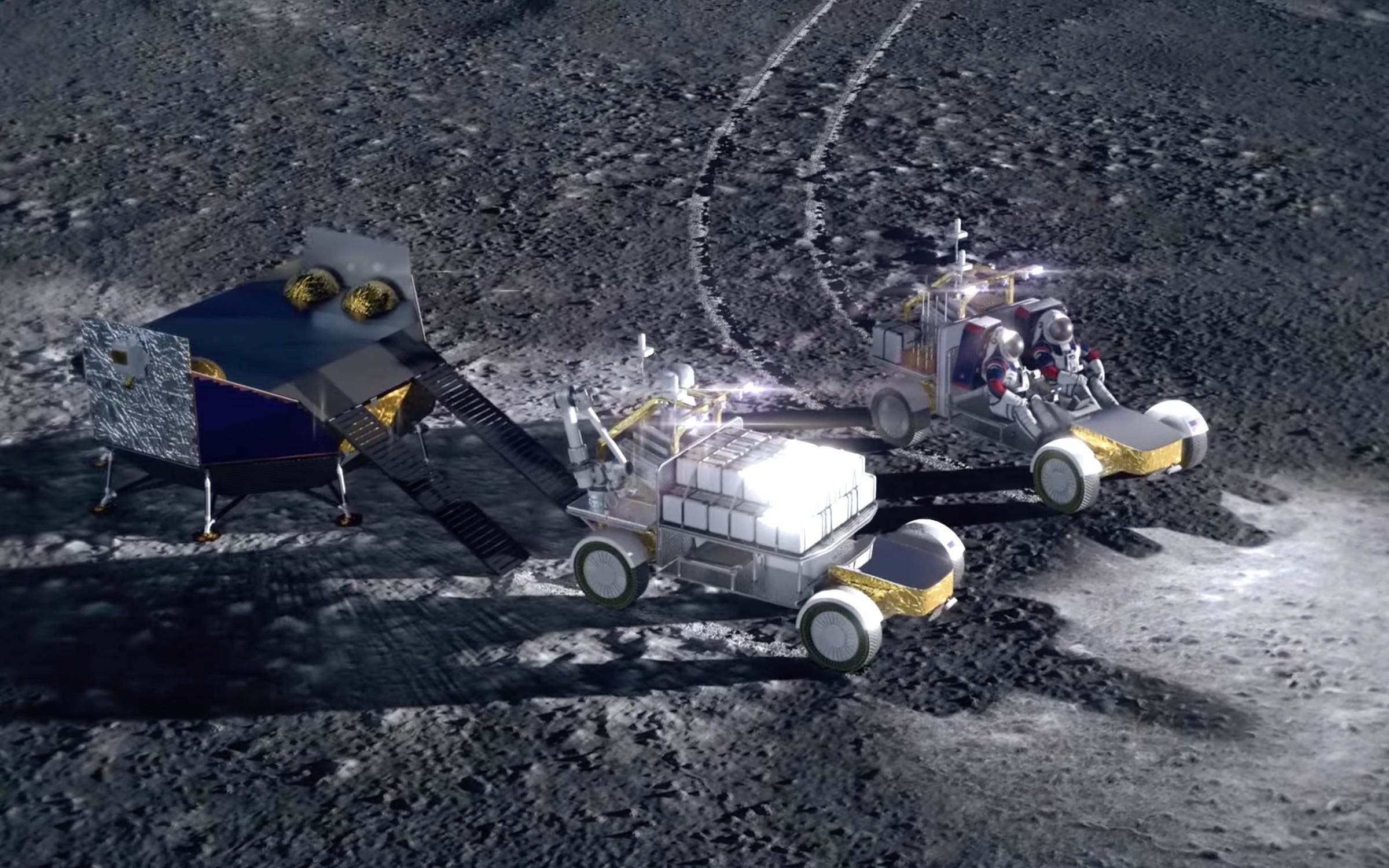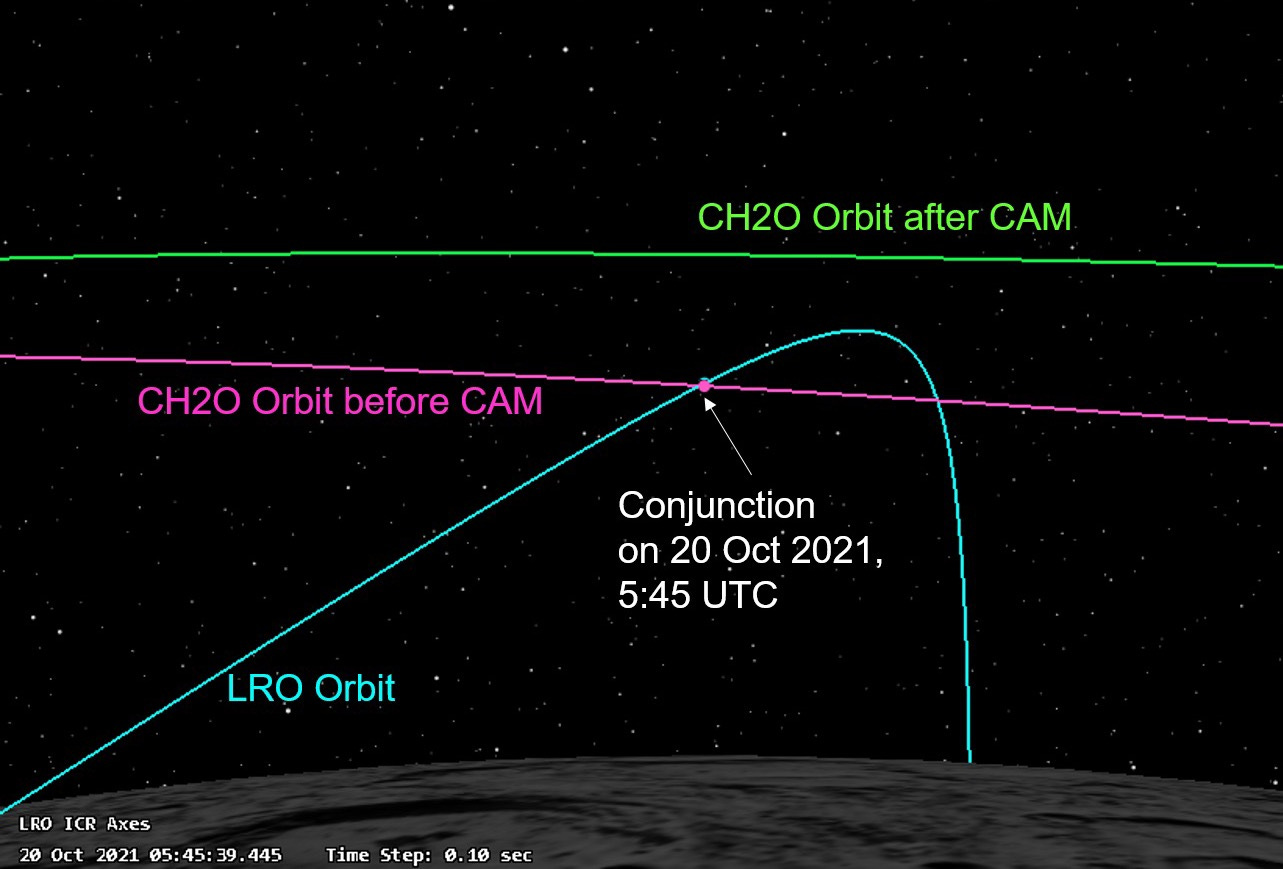Moon Monday Issue #54
NASA to send commercial Moon lander to an enigmatic swirl, U.S. watchdog says Artemis is currently unsustainable, Northrop Grumman to bid rugged rover for future astronauts, and more lunar updates.
Highlight & Science
NASA has selected Intuitive Machines as the commercial lander provider to deliver 92 kilograms of science and technology payloads to the swirl of Reiner Gamma on the Moon as part of the agency’s CLPS program. For a bargain price of $77.5 million, Intuitive Machines will land and jointly operate five rovers and a bunch of science instruments in 2024.

The swirl of Reiner Gamma has a weak local magnetic field, possibly a remnant from the time the Moon had a global magnetic field. The mission’s primary payload suite Lunar Vertex is a collection of spectrometers and magnetometers on the lander and a rover. The rover, which Lunar Outpost will provide, will drive up to two kilometers over 13 Earth days, exploring at least one bright and dark section of the lunar swirl. Lunar Vertex will study the swirl’s composition, and map the strength and direction of magnetic fields at its surface, complementing observations from past orbiters. This will be the world’s first mission to a swirl, and will provide us insights into how they form and evolve, better understand effects of the solar wind and bombarding micrometeorites on planetary bodies across the solar system, and shape our understanding of the Moon’s magnetic evolution.

The other four rovers Intuitive Machines will land in Reiner Gamma are part of NASA’s Cooperative Autonomous Distributed Robotic Exploration (CADRE) project. The shoebox-sized rovers will autonomously navigate the landed region and collectively better map it than a single rover can. Onboard the lander will also be a South Korean instrument to monitor high-energy particles as the Moon passes in and out of Earth’s magnetic tail, and an ESA-provided MoonLIGHT retroreflector, which will reflect laser beams from Earth to make precise distance measurements and infer properties of the Moon’s core, the Moon drift rate away from Earth, and test General Relativity.
This science-packed mission represents a new phase for NASA’s CLPS program to send instruments on commercial lunar landers, enhanced thanks to the recent PRISM initiative. The second mission in this enhanced science phase will visit the Schrödinger crater in 2024, for which NASA will announce the winning commercial landing bidder next.
The Reiner Gamma landing is Intuitive Machines’ third such NASA contract and also their third Moon mission, following the first two missions in 2022. All three missions will launch on a SpaceX Falcon 9 rocket, with each lander carrying at least 100 kilograms of payloads to the lunar surface. The third lander will also carry a thousand kilograms worth of spacecraft on an attached dispenser ring to deploy them on a lunar transfer orbit, one of which will be the company’s own communications satellite called Khonstellation. This satellite will place itself in an orbit around the Earth-Moon L2 point, like the previous Khonstellation similarly deployed by the company’s second lander, to relay communications between Earth and hardware on the lunar farside or poles.
Exploration
NASA’s Office of Inspector General has released another critical report on the agency’s Artemis program to land and sustain humans on the Moon. It summarizes the report as follows:
NASA lacks a comprehensive and accurate cost estimate that accounts for all Artemis program costs. For FYs 2021 through 2025, the Agency uses a rough estimate for the first three missions that excludes $25 billion for key activities related to planned missions beyond Artemis III. When aggregating all relevant costs across mission directorates, NASA is projected to spend $93 billion on the Artemis effort up to FY 2025., We also project the current production and operations cost of a single SLS/Orion system at $4.1 billion per launch for Artemis I through IV, although the Agency's ongoing initiatives aimed at increasing affordability seek to reduce that cost. Multiple factors contribute to the high cost of ESD programs, including the use of sole-source, cost-plus contracts; the inability to definitize key contract terms in a timely manner; and the fact that except for the Orion capsule, its subsystems, and the supporting launch facilities, all components are expendable and "single use" unlike emerging commercial space flight systems. Without capturing, accurately reporting, and reducing the cost of future SLS/Orion missions, the Agency will face significant challenges to sustaining its Artemis program in its current configuration.

While members of NASA leadership concurred with many of the report findings, they didn’t agree on how the costs should be tracked, essentially saying that Artemis is a “campaign” of lunar exploration efforts and not a defined program. For the per-mission cost, they argue the agency “does not account, track, or report costs on a per-mission basis, precisely because doing so would reduce contractual transparency to key stakeholders.” On a non-critical note, the report complimented NASA for using a commercial model to land Artemis astronauts on the Moon, and noted that “SpaceX has contributed much more than half of the required funding to date for the HLS system and plans to continue this level of contribution.”
Earlier this month, the U.S. Court of Federal Claims denied Blue Origin’s lawsuit against NASA for the agency selecting SpaceX Starship as the sole spacecraft provider to land the first Artemis astronauts on the Moon. The court has now released the 47-page redacted report detailing its decision, which essentially says Blue Origin couldn’t prove that NASA’s conduct was “arbitrary and capricious or otherwise contrary to law.” It adds that their price was simply too high for the available budget to NASA and that their bid was noncompliant anyway. It further adds that even if Blue Origin was given the opportunity to alter their bid, they didn’t seem to have a demonstrably different bid.
While Blue Origin founder Jeff Bezos has decided to stop pursuing their protests, the drama may not be fully over yet. NASA is still under pressure from the U.S. Senate to include a competitor for the mission. If the senate’s recent draft of appropriation bills for fiscal year 2022 is passed, it would direct NASA to select a second company regardless of funding availability. Either way, NASA has formally begun planning its Lunar Exploration Transportation Services (LETS) program to regularly ferry astronauts to and fro the Moon after the first few Artemis missions. To that end, NASA funded five commercial companies two months ago—including Blue Origin and SpaceX—to advance their crewed and large-cargo lunar lander concepts in specific ways that makes them cost-effective and sustainable.
In September, NASA asked the U.S. industry for feedback on how it could go about procuring an extremely capable, commercial Lunar Terrain Vehicle rover for its Artemis astronauts to explore the Moon. While NASA prepares to solicit said proposals by next year, the bidders are coming out. We already knew Lockheed Martin and General Motors will pitch their co-designed autonomous rover that can handle rugged terrain at the Moon’s poles, and survive and “even operate” in the frigid lunar night. Now Northrop Grumman has come forth with its intent to bid an autonomous rover too, in crew and cargo variants, that can last for 10 years as required by NASA.

Northrop will partner with Lunar Outpost—the company sending its small, autonomous, rugged and robotic MAPP rover on two prior Moon missions—to build the rover, for which AVL will provide the drive, steering and suspension mechanisms and Michelin will design the tires. Since NASA wants the rover to be delivered on a commercial landing mission, Northrop has partnered with Intuitive Machines to use their upcoming 500-kilogram capacity Nova-D spacecraft to land the rover on the Moon. In addition to leading the bid and rover integration, Northrop is also engaging Apollo astronauts Harrison Schmitt and Charles Duke to leverage their experience to optimize the rover for the needs of researchers and astronauts.
NASA and the U.S. Department of Energy are asking U.S. companies to propose designs for autonomous, compact and lightweight fission surface power systems that could launch to the Moon within a decade and provide at least 40 kilowatts of electrical power—enough to continuously power 30 households for ten years. Fission systems can operate continuously in the Moon’s permanently shadowed regions as well as during the long and frigid lunar night, and thus be able to provide crucial and ample power to enable sustained robotic and human presence on the Moon.
Update: In last week’s coverage, I missed the second company selected for the Canadian rover study. Below is an updated paragraph.
After requesting proposals from Canadian companies earlier this year to build a lunar rover, the Canadian Space Agency (CSA) has awarded MDA and Canadensys detailed design study contracts for a mission at the Moon’s south pole to potentially explore water ice and other resources in permanently shadowed regions. An interesting and challenging requirement is for the rugged rover to survive an entire lunar night. CSA intends to select one of the two companies to build the rover for the actual mission, which will launch in 2025 onboard an as-yet unspecified NASA-funded U.S. commercial landing mission.
More Science
An object 40 to 100 meters across which quasi-orbits Earth—meaning it actually orbits the Sun but lies very close to Earth, and from our reference looks like its circling us—may actually be a piece of the Moon ejected by a past asteroid impact.
The Washington State University team won NASA’s 2021 BIG Idea Challenge to develop an effective lunar dust mitigation technique for future crewed and robotic missions to the Moon. They demonstrated a proof-of-concept with a spray-bar which used cryogenic liquid droplets to lift and transport over 90% of hazardous lunar dust from spacesuit materials. The technique’s core operating principle is the Leidenfrost effect, wherein if a liquid is close to a surface significantly hotter than its boiling point, an insulating vapor layer forms that keeps the liquid from boiling rapidly. This makes the droplet hover, much like how water drops sprinkled on an already hot pan skitter. Check out the team’s poster and technical paper, as well as the other novel lunar dust removal ideas from the rest of the finalists.
More Moon
If you thought Earth orbit is getting crowded, the Moon maybe next in line. On October 18, ISRO commanded its Chandrayaan 2 orbiter to change its orbit slightly to avoid an uncomfortably close approach (about 3 kilometers) to NASA’s Lunar Reconnaissance Orbiter near the Moon’s north pole. Both spacecraft orbit the Moon in a nearly polar orbit, which is why they can come close to each other over the poles.

Thank you Andrew Cantino, Hunter Danque, Open Lunar Foundation and SWISSAPOLLO for supporting me and powering this edition of Moon Monday.
Everyone, this one-of-a-kind Moon exploration newsletter is free, with no ads. And it will stay that way. If you like my comprehensive lunar exploration and science coverage, your support will keep it going.
